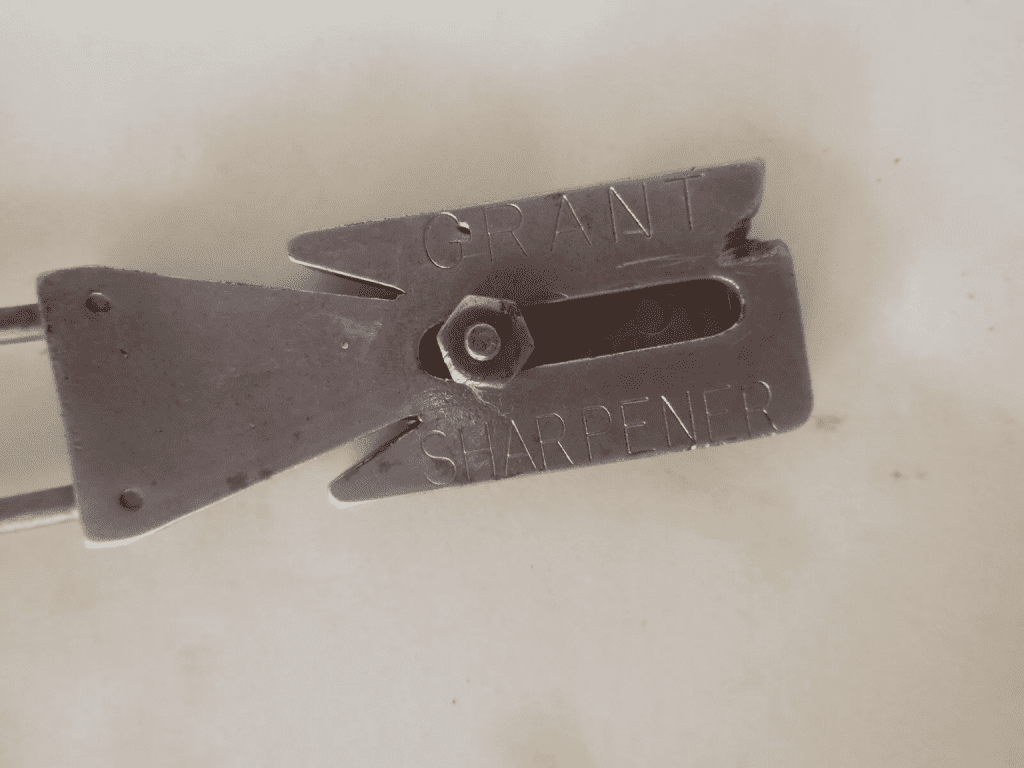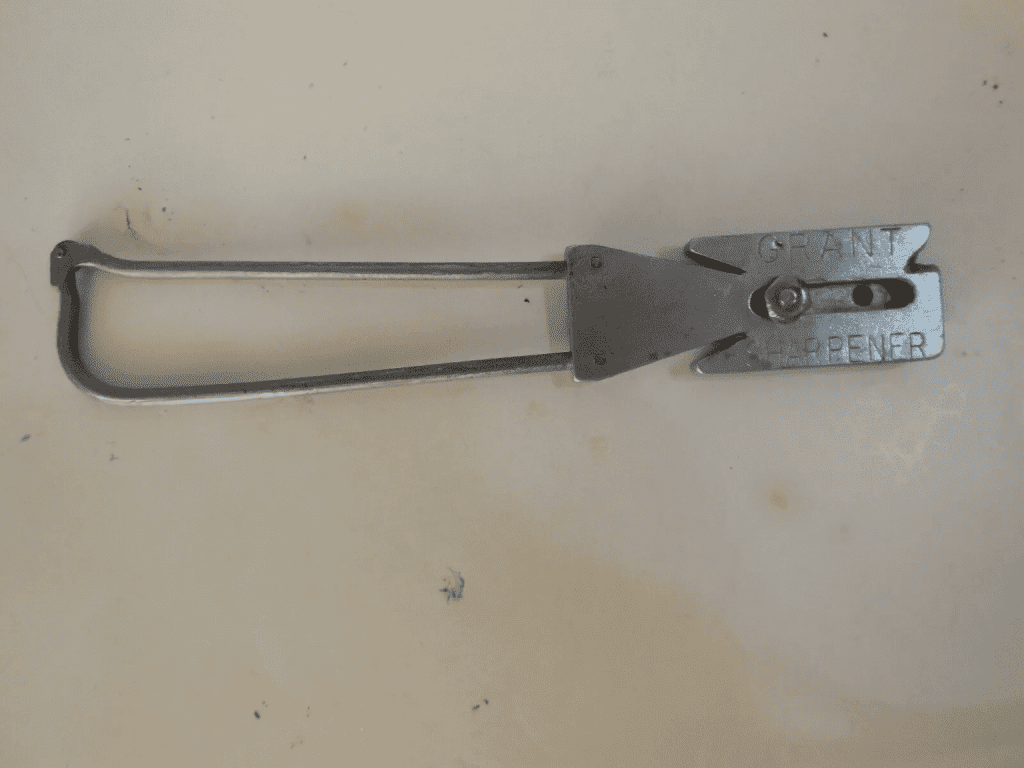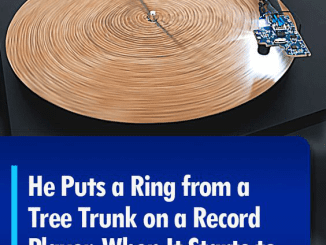In today’s fast-paced, disposable society, it’s easy to forget the value of tools that were once essential in every household. Among these unsung heroes is the vintage knife and scissor sharpener, a simple yet indispensable tool that helped families maintain their cutting instruments with ease. With a rich history, practical usage, and an enduring legacy, this humble sharpener has stood the test of time and remains a cherished piece of our crafting and culinary heritage.

A Historical Glimpse into the Vintage Sharpener
The vintage knife and scissor sharpener dates back to the early 20th century when home maintenance became increasingly important. As families embraced home cooking and domestic self-reliance, the need for well-maintained tools grew. During this era, buying new knives and scissors wasn’t as convenient or cost-effective as it is today. Instead, households relied on sharpeners to extend the life of their blades.
Early sharpeners were typically made from durable materials like metal and wood, designed to endure frequent use in kitchens and workshops. These sharpeners reflected the resourcefulness of the time, allowing people to care for their tools without needing professional services. Sharpening not only saved money but also became a practice in sustainability, a value that resonates strongly with today’s eco-conscious movement.
Practical Usage: How Vintage Sharpeners Restored Blades to Perfection
The functionality of the vintage knife and scissor sharpener is simple yet effective. Its primary purpose was to restore dull blades to their original sharpness, making tasks like cutting, slicing, and trimming more efficient. Using these sharpeners was easy—homeowners would slide the blades through the designated slots, often featuring rough, abrasive surfaces to grind and reshape the edge.
Many vintage models also came with honing capabilities, which allowed users to maintain the sharp edge between full sharpening sessions. Honing helped realign the blade’s edge, preventing it from becoming dull too quickly. This dual-purpose design made the sharpeners invaluable not only for home cooks but also for seamstresses, tailors, and anyone who relied on sharp scissors and knives for their trade.
Beyond kitchens and workshops, these sharpeners became essential in other areas of life. Gardeners used them to maintain pruning shears, and craftsmen kept their tools in top condition, ensuring precise cuts and craftsmanship. In this way, the vintage sharpener became a symbol of resourcefulness, representing the DIY spirit of an era where people took pride in maintaining their belongings.
The Legacy of the Vintage Sharpener in Modern Times
While electric sharpeners and disposable blades dominate today’s market, the vintage knife and scissor sharpener continues to hold a special place in the hearts of collectors and enthusiasts. Its legacy is built on practicality, craftsmanship, and the timeless value of self-reliance.
One reason vintage sharpeners remain popular is their craftsmanship. Unlike today’s mass-produced items, these sharpeners were built to last. Collectors now seek out vintage models for their durability, unique designs, and the nostalgic charm they bring to a kitchen or workshop. They serve as functional tools and decorative pieces, evoking memories of a time when every household valued sustainability and frugality.
In today’s age of minimalism and environmental awareness, there has been a renewed interest in maintaining and repairing tools rather than discarding them. The vintage sharpener perfectly aligns with this mindset, offering an eco-friendly alternative to constantly buying new knives or scissors. By restoring a dull blade to its former sharpness, the sharpener reduces waste and encourages the thoughtful use of resources.
The Return of Manual Craftsmanship
In addition to being a practical tool, the vintage sharpener is a testament to manual craftsmanship. While modern technology offers convenience, many people still appreciate the hands-on experience of manually sharpening a blade. There’s something inherently satisfying about the sound of metal against stone, knowing that you’re extending the life of your trusted tools.

This appreciation for manual craftsmanship is why vintage sharpeners are increasingly sought after by those who value quality over quantity. Whether it’s in the kitchen or a workshop, the tactile experience of using a vintage sharpener connects us to a time when people took care of their tools, rather than discarding them at the first sign of wear.
Why Vintage Sharpeners Are Still Relevant Today
The enduring relevance of vintage knife and scissor sharpeners lies not just in their functionality, but in what they represent. They remind us of the importance of maintaining the things we own, rather than giving in to a throwaway culture. They encourage us to be resourceful, mindful, and connected to the tools we use daily.
In modern kitchens, a vintage sharpener can be a conversation starter, a unique piece that adds character to the space. More than just a relic, it’s a tool that can still be used effectively today, proving that good design and quality materials never go out of style.
How to Care for a Vintage Sharpener
If you’ve inherited or purchased a vintage sharpener, it’s essential to care for it properly. These tools, like the blades they sharpen, require maintenance to function at their best. Start by cleaning the sharpener regularly to remove debris and metal particles that accumulate during use. A simple wipe with a cloth after each sharpening session can go a long way in preserving its effectiveness.

Additionally, inspect the abrasive surfaces from time to time. If they’ve become too worn, you might need to replace or refresh them to ensure the sharpener continues to work well. With a little care, your vintage sharpener will serve you for many more years, keeping your knives and scissors in peak condition.
Conclusion: A Legacy of Craftsmanship and Sustainability
The vintage knife and scissor sharpener is more than just a tool—it’s a symbol of a time when people valued craftsmanship, sustainability, and the art of caring for their belongings. Its rich history, practical use, and lasting legacy make it a cherished item in homes and workshops around the world.
As we embrace modern conveniences, it’s essential to remember the value of such simple, durable tools. The vintage sharpener teaches us to slow down, take care of what we have, and appreciate the satisfaction of maintaining our tools ourselves. Whether it’s for practical use or as a decorative piece, the vintage sharpener continues to inspire a new generation to value craftsmanship and sustainability.


